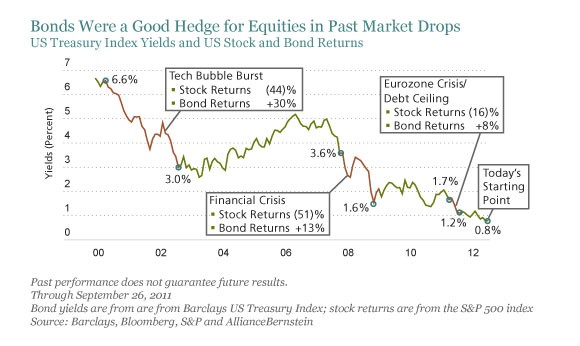Mitigate Your Equity Risk
Post on: 1 Июль, 2015 No Comment

A lot of people tend to believe that mitigating equity risk is as simple as holding a few dozen stocks or a handful of mutual funds. Although these practices are conceptually true, they are wholly incomplete methods of diversification and only touch the surface of what can be done. Mitigating equity risk to the fullest extent possible involves holding multitudes of stocks and asset classes. and doing so in meaningful allocations across the spectrum of global equity opportunities.
Confused? It’s not at hard as it sounds. Read on to learn about some of the key ways that you can reduce equity risk in your portfolio.
How Many and What Kind of Stocks Should I Hold?
The most common mistake made by individual investors is believing that a few dozen stocks provide meaningful diversification. This belief is generally perpetuated by media and books that report the results of superstar stock pickers and the idea that great investors hold a few stocks, watch them like a hawk, and don’t lose money as long as they hold them for the long term. Although these statements are arguably true, they have little to do with mitigating equity risk. Such statements are what might be called irrational rationalizations, or rational statements used to build an irrational conclusion. (For background reading, see The Importance Of Diversification .)
Statistical analysis demonstrates that by holding about 30 stocks, you can diversify away company-specific risk and be left with the systematic risk exposure inherent in equities. What most people fail to realize is that this practice does nothing to diversify the risk inherent in holding specific asset classes such as U.S.large or small cap stocks. In other words, even if you hold the entire S&P 500, you will still be left with the tremendous systematic risk associated of with U.S. large-cap stocks.
Remember that the S&P 500 lost 50% in the bear market of March 2000. This is why diversifying among various equity asset classes is of the utmost importance in mitigating equity risk.
How Can Global Equity Help?
Global equity markets are very big, and there are many commonly accepted, distinct equity asset classes, each with unique valuation characteristics, levels of risk, factors and reactions to various economic conditions. The table below lists the six most commonly accepted broad equity asset classes, as well as their associated levels of return volatility (or annualized standard deviation of returns) over the last 15 years. The Lehman Aggregate Bond Index is also shown to illustrate the comparative volatility of equities relative to bonds. It’s a pretty big difference, with equities being anywhere from four to eight times as volatile. (To learn more about this concept, see The Uses And Limits Of Volatility .)
What About Mutual Funds?
The most common problem that individual investors have with diversifying among various asset classes is that you just can ‘t do it by picking individual stocks. So, in order to provide meaningful equity diversification, you need to accept that it can only be accomplished through mutual funds or exchange-traded funds (ETFs). Moreover, you have to accept that you need to pick your mutual funds very carefully — at least as carefully as you would pick an individual stock. (To learn more, read Picking The Right Mutual Fund .)
Uninformed or lazy financial advisors often lead people to believe that by holding mutual funds with names that purport various asset class exposures you are achieving diversification. This just isn’t true!
Keep in mind that mutual fund names are generally chosen for marketing purposes and often have little to do with their asset class exposures. Another thing you need to keep in mind is that a lot of mutual funds tend to be opportunistic and move among various asset classes. So, when your advisor presents mutual funds, insist on seeing some sort of objective analysis that illustrates their specific asset class exposure — not just a current snapshot, but their historical asset class exposure over time. This is an extremely important concept because you want your mutual fund managers to reliably fill the exposures set forth in your asset allocation policy. Without question, the best way to ensure you are getting a specific asset class exposure is through index ETFs or mutual funds. (For more insight, read Rebalance Your Portfolio To Stay On Track .)
Wouldn’t I Make More by Picking Individual Stocks over Index Funds?
Individual investors tend to believe that index funds leave a lot of money on the table because good stock pickers can trounce the market if given a chance. Yes, it’s true that there are many instances of great stock pickers beating the markets, but it is also true that there is no proven way whatsoever to find these people ahead of time, meaning there is no such predictive financial model in existence.
Furthermore, research has shown that most professional money managers can’t beat their indexes net of fees. According to a September 2007 report by Morningstar, if you examine all U.S. large cap money managers over the last 10 years, only 36% of them actually beat the S&P 500 net of fees. The chances that active management will succeed increase in less efficient asset classes, but not by a lot. For example, even in the least efficient equity asset class, emerging markets, Morningstar found that only about half of the money managers beat their indexes over the last 10 years. (To learn more, read Is Your Portfolio Beating Its Benchmark? )

Another irrefutable benefit of indexing is that it’s very cheap. The types of mutual funds available to the average investor easily charge anywhere from 1-2%, whereas an index fund charges about 0.2-0.5% for just about any asset class exposure.
Still Think You Know Best?
One major pitfall that individual investors succumb to is that although they may already be aware of many of the points presented above, they fail to implement them in a meaningful way.
Often, this is because financial advisors realize that individual investors tend to have a very short patience horizon, fear investments outside the U.S. and tend to anchor their performance evaluation to the S&P 500. With this in mind, advisors manage their business risk by recommending portfolios that are not only dominated by U.S. stocks, but are also dominated by the S&P 500. To avoid this mistake, make sure that you spread your assets in a meaningful way. To guide you in this regard, keep the following general guidelines in mind:
- U.S. large-cap stocks make up about 70% of the U.S. market.
- U.S. mid- and small-cap stocks make up about 30% of the U.S. market.
- U.S. stocks as a whole make up less than half of the world’s total equity markets.
- International, small and emerging market stocks make up about 30% of the international equity marketplace.
Although there are a lot of pieces to the puzzle of equity diversification, it is easy as long as you adhere to some pretty simple guidelines. Don’t think that by holding a few dozen stocks or a handful of mutual funds that you are diversified. True equity diversification involves holding stocks within multiple equity asset classes, and doing so across the world and in meaningful allocations.
The cost of failing to diversify your portfolio can be huge not only in terms of losses, but also in terms of lost opportunity. To illustrate, consider the performance of the S&P versus a globally diversified equity index since the beginning of the last bear market in 2000.














